George W. Hart
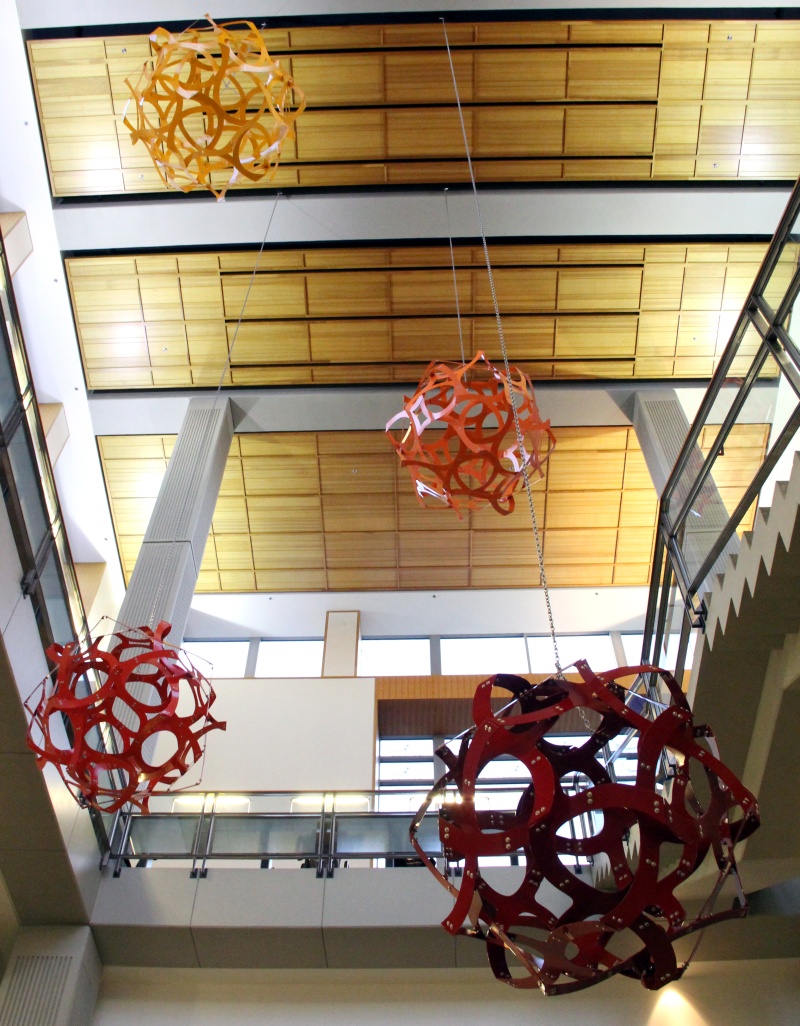
These four orbs make up my sculpture called
Geometry Ascending a Staircase, hanging in the atrium
of the CIEMAS Engineering building at Duke University.
The low red one is 4 feet in diameter. The higher
orange ones are 5, then 6 feet in diameter, up to the
highest, yellow one, which is 7 feet in diameter.
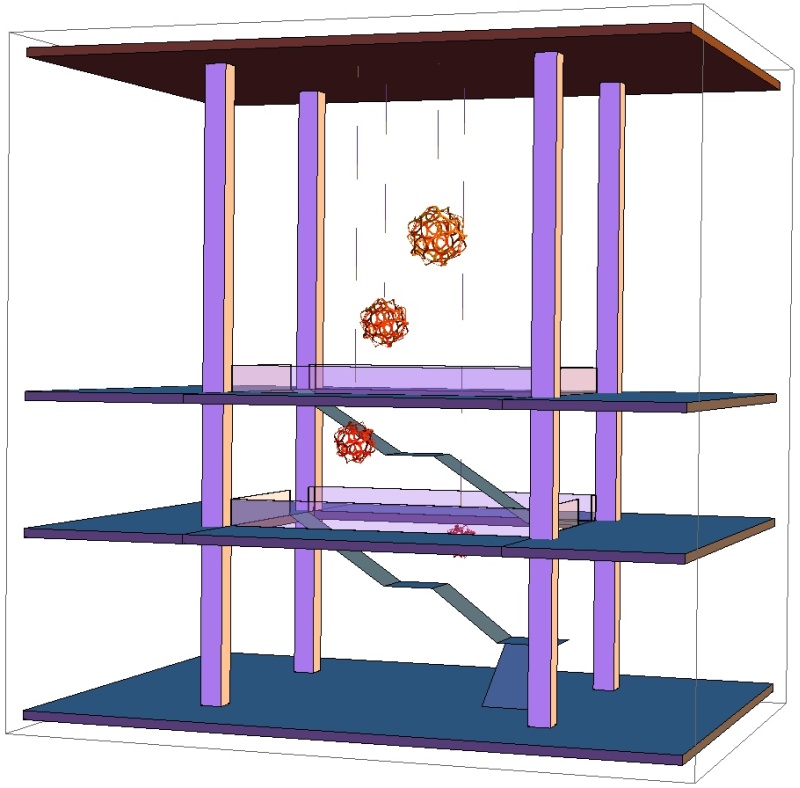
It is hard to get a photo of all four orbs
because of the way they fill the 75-foot tall atrium, but
the rendering above gives a good sense of the overall
design. The low red orb catches your eye when you walk
in the ground floor of the building. Then as you walk
up and around the stairs you get many views from below,
around, and above the individual orbs.
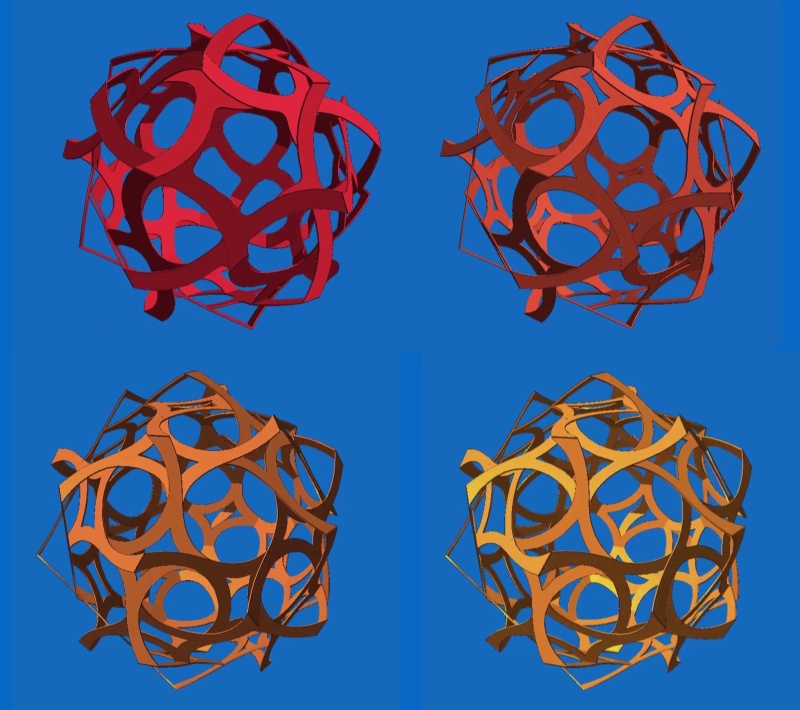
The above rendering shows how the design
develops. In addition to the color varying from red
through two shades of orange to yellow, the parts become
lighter, and the central opening (absent in the red orb)
grows larger with height. I think of it something like
a flower blossoming.
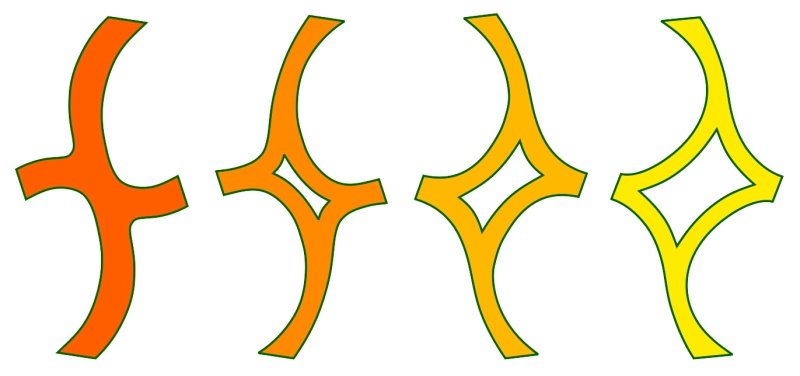
Each orb consists of thirty identical flat
parts. This image indicates how the component shape
develops. Note the reversal of handedness, with the
last two being mirror images relative to the first two.
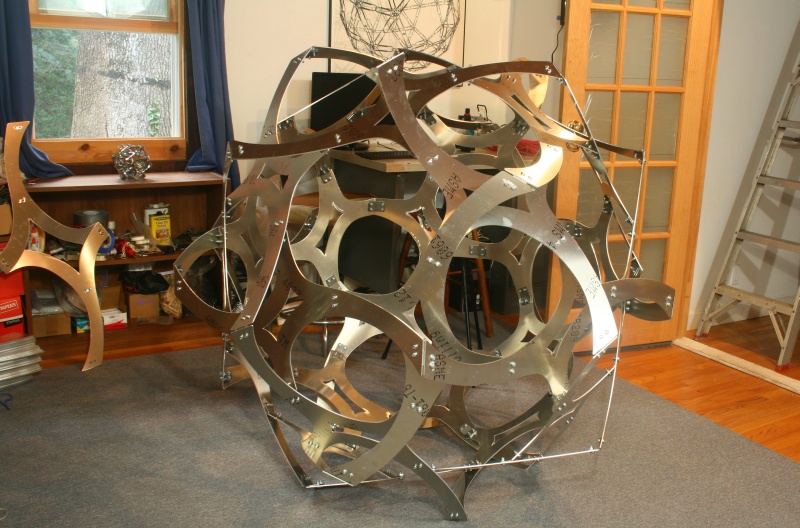
I had the parts laser-cut from aluminum,
then test-fit them at my studio in New York to verify that
everything fit well, before sending them out to be powder
coated in the four colors. I could assemble the first
three orbs by myself, so I built one a day for three days
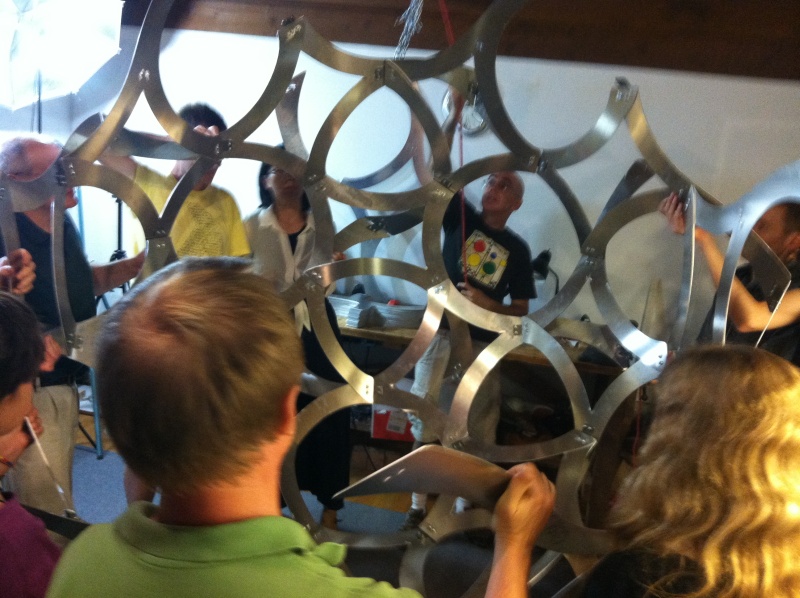
But for the largest orb I invited a bunch of
friends over for a sculpture assembly party. This was
also a way for me to practice teaching the assembly process
to people who were unfamiliar with the design, to see what
aspects of the construction might need careful explaining.
Then the powder-coated parts were shipped to
Duke University for the actual assembly. Thousands of
stainless steel nuts, bolts, and washers are required, along
with some simple hand tools.
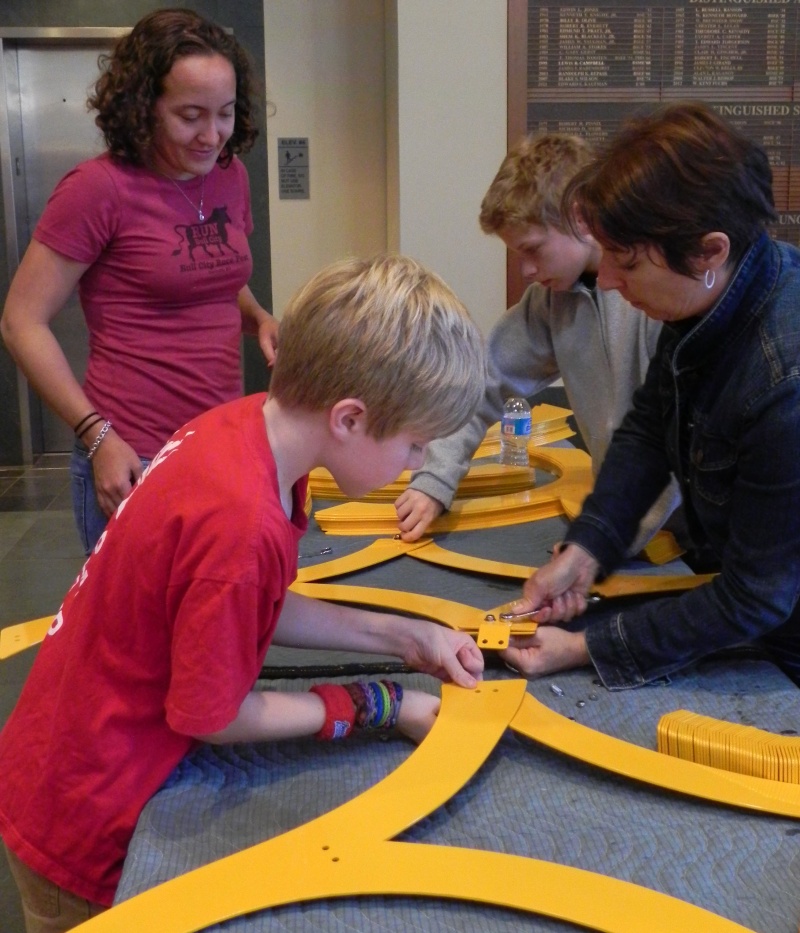
We invited the campus community to a
"sculpture barn raising" on Sunday afternoon, October 20,
2013, and set up four tables on the ground floor of the
atrium. Each table had the parts for one sculpture and
I could go around from table to table explaining the
assembly steps for each.
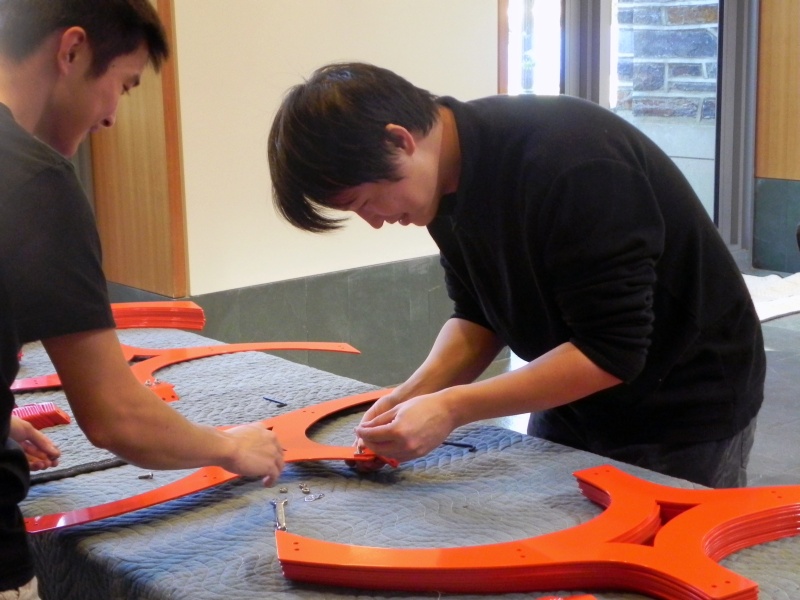
Here, the first steps are to connect the
angle-brackets to the parts in precisely the right
way. In addition to finding the correct set of holes,
the relative orientation of the parts, the brackets, and the
nuts and bolts all matter. And don't forget to
include the two washers. Before we started, I
assembled one part as a model to copy and trained a "build
leader" for each table.
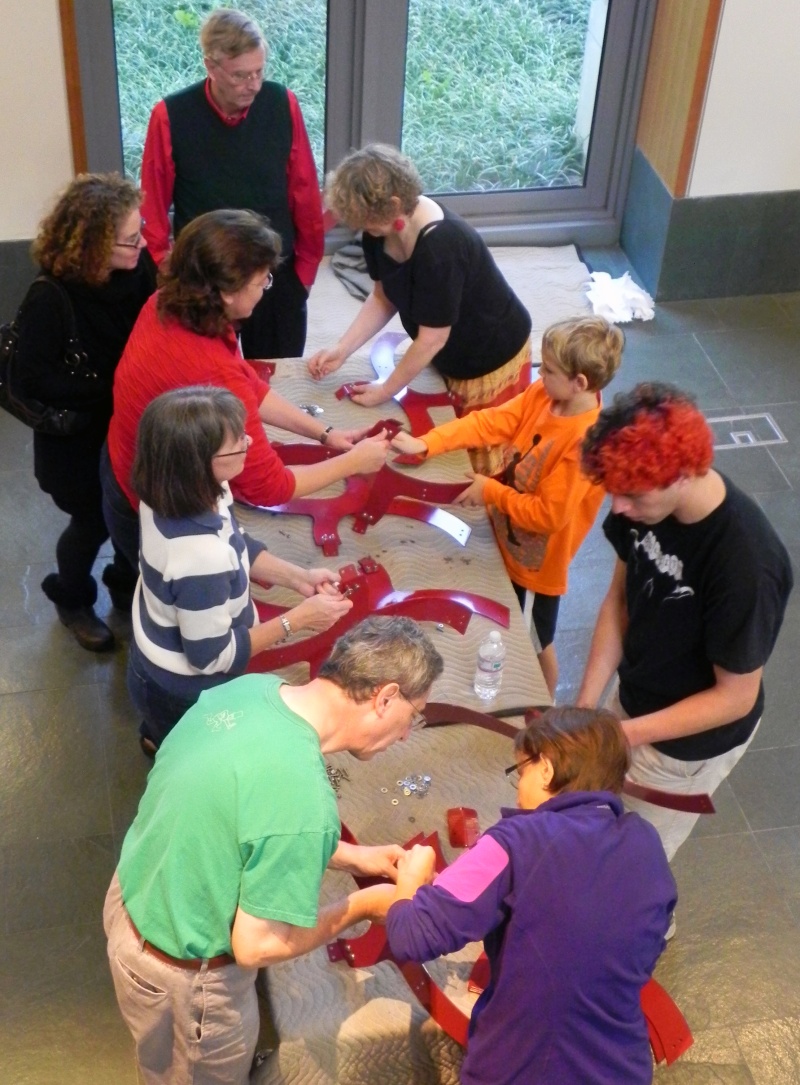
Participants could come and go throughout
the afternoon, but the build leaders stayed and provided
continuity as I ran around from table to table.
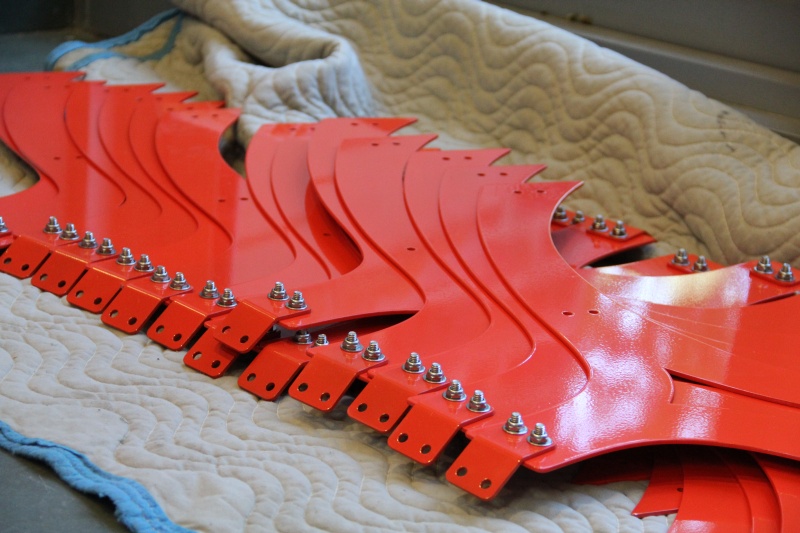
The first stage resulted in parts with
connected brackets. This is relatively easy for the
two smaller orbs, because their parts are one-piece.
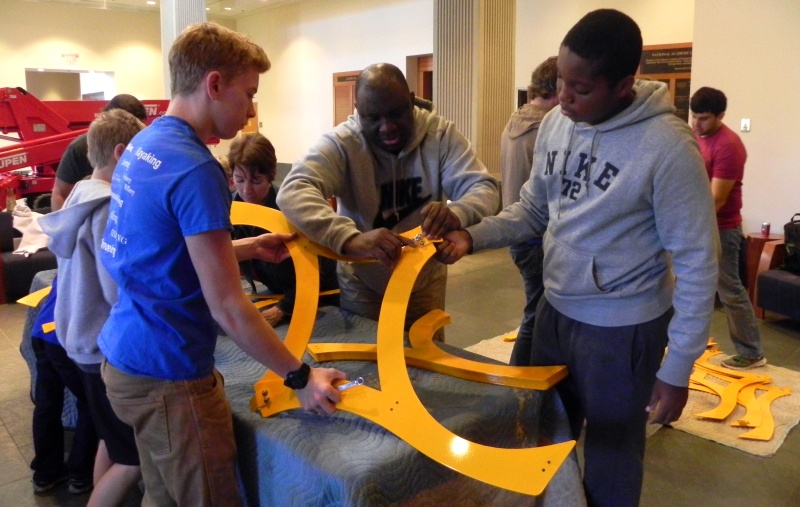
But for the two larger orbs, the parts are
each assembled from two smaller pieces, and the unders and
overs had to be just right for the result to have a 2-fold
symmetry axis, so there were more opportunities for
confusion. But everything worked out fine.
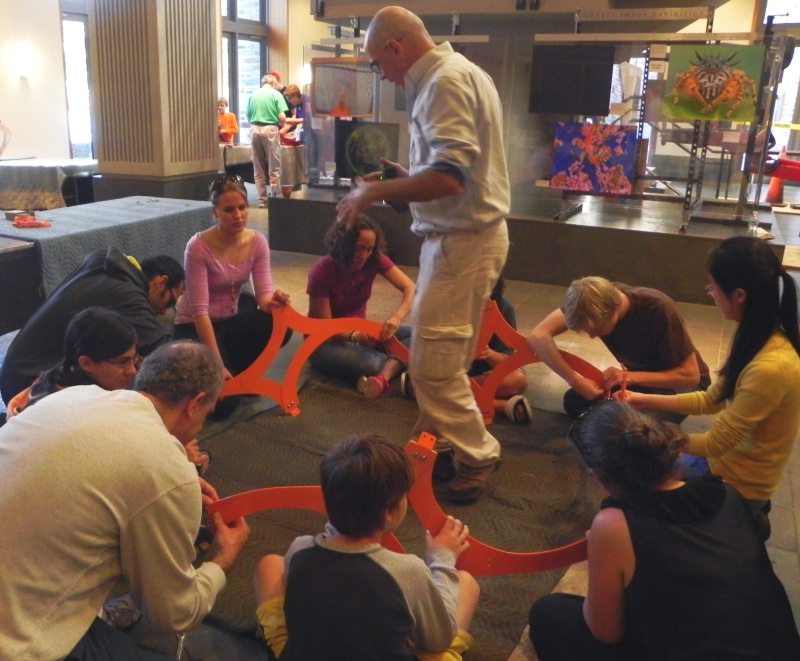
Then we started assembling the parts
together. The first step is to make an equator of five
units on the ground in the shape of a regular
pentagon. These join using a second type of bracket
with a different dihedral angle and there is a handedness
issue to check, so again there is plenty of room for
possible confusion.
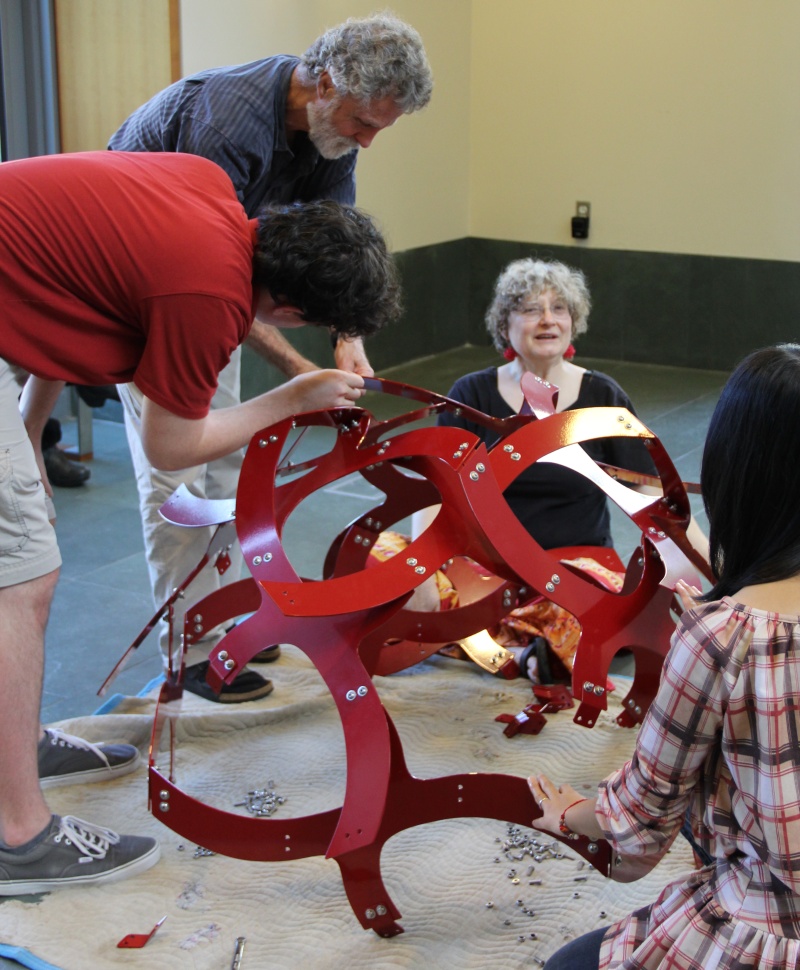
Using the equator as a base, parts are added
above it to create one hemisphere. At this stage, the
shape of the parts guides you, so it comes together largely
automatically and it's fun to watch the growing structure.
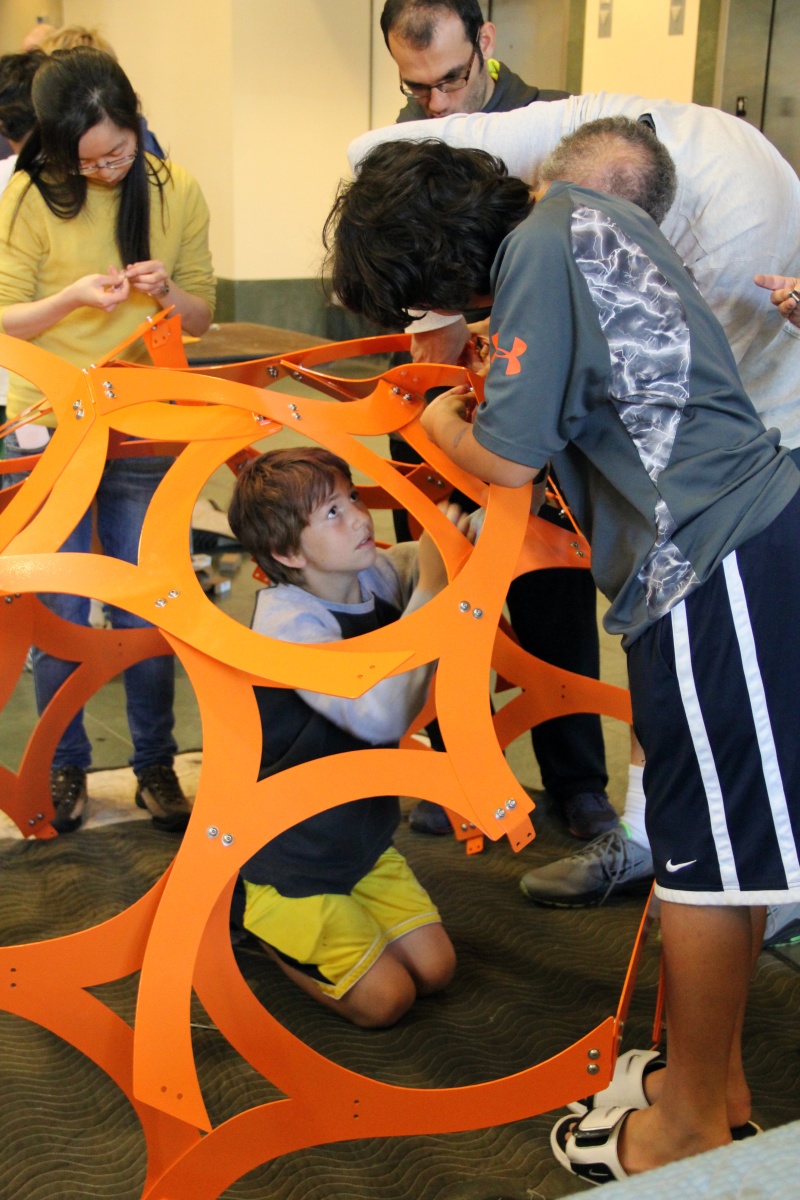
It's also fun to crawl within the alien
igloo architecture and work from the inside to complete the
hemisphere before turning it over.
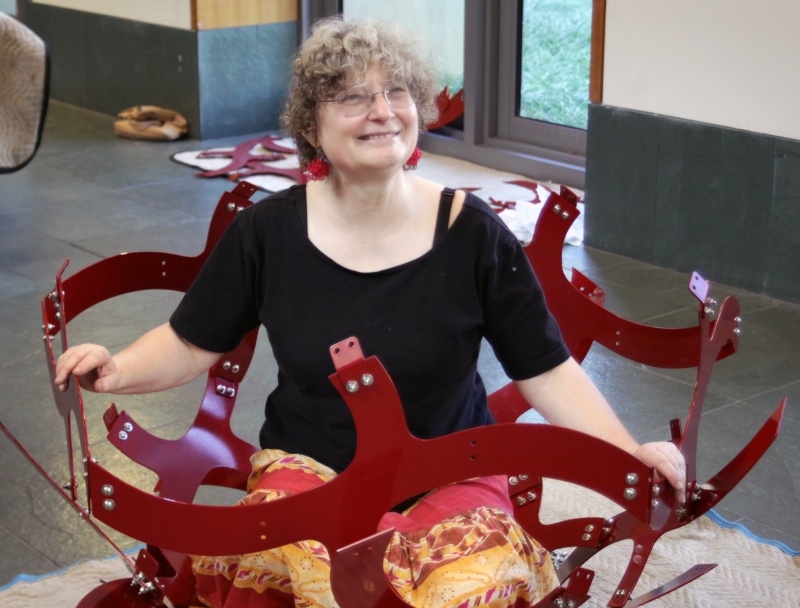
Let me take this opportunity to thank Prof.
Ingrid Daubechies, above, who commissioned the sculpture and
took care of many local arrangements during the long period
of its hatching.
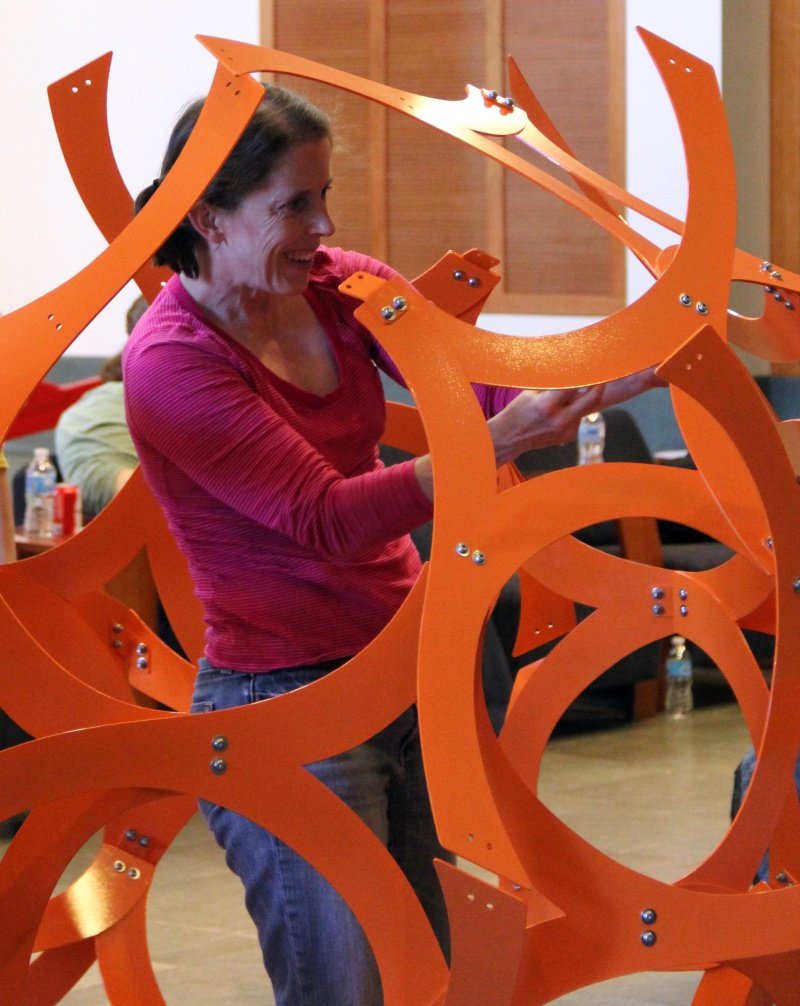
The second hemisphere assembles just like
the first, so I thought I could probably go home now and let
the participants finish everything on their own.
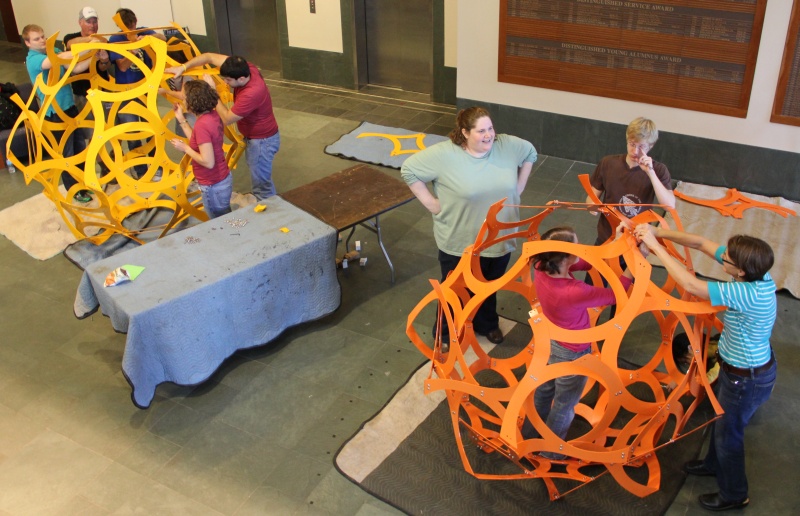
But then---surprise---we discovered we were
missing a couple of boxes of washers. So we sent folks
out to the area hardware stores to find some.
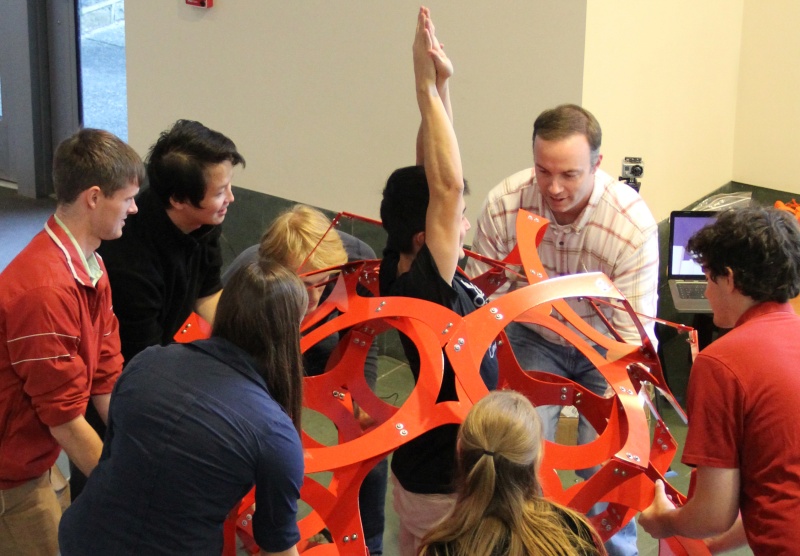
No problem---we got the washers and finished
assembling everything. Getting people out from the
inside was a good part of the fun.
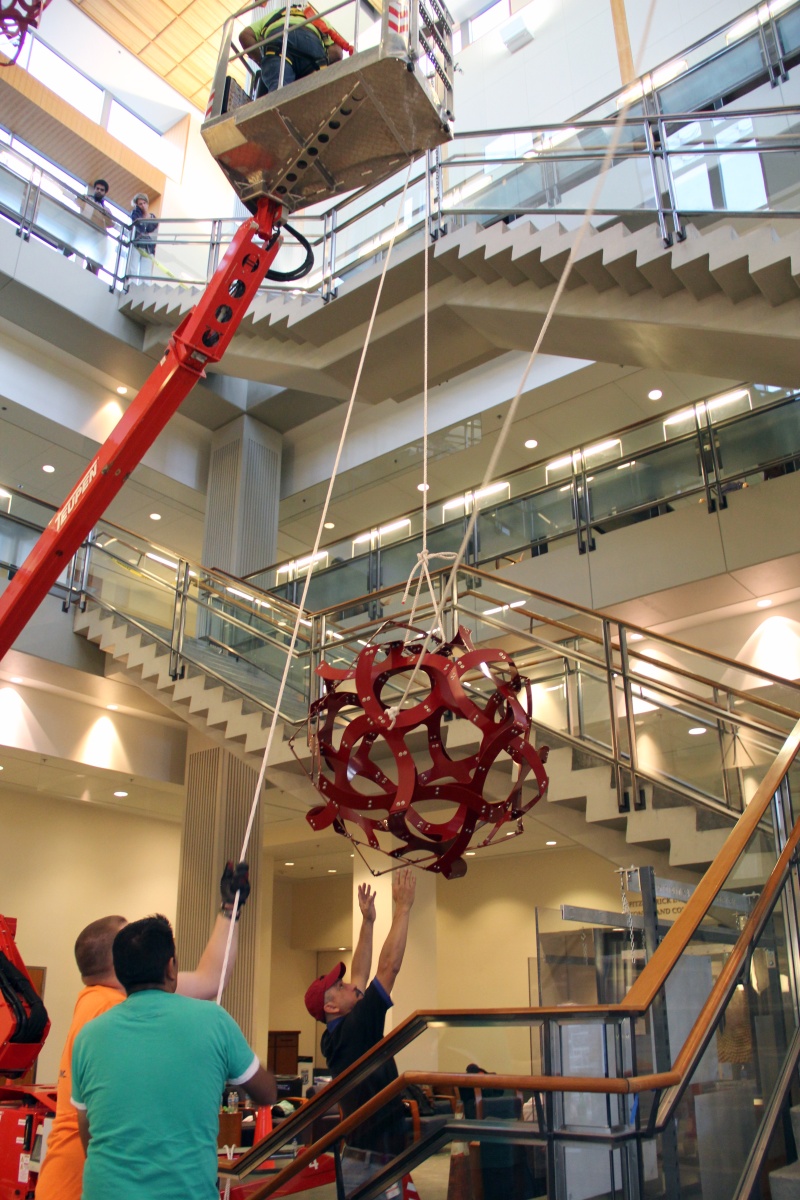
Then the riggers came to hoist the orbs up
to the chains, which had been installed to the proper
heights a few days earlier. This is the part where it
gets interesting and you replay all the load-safety
calculations in your head.
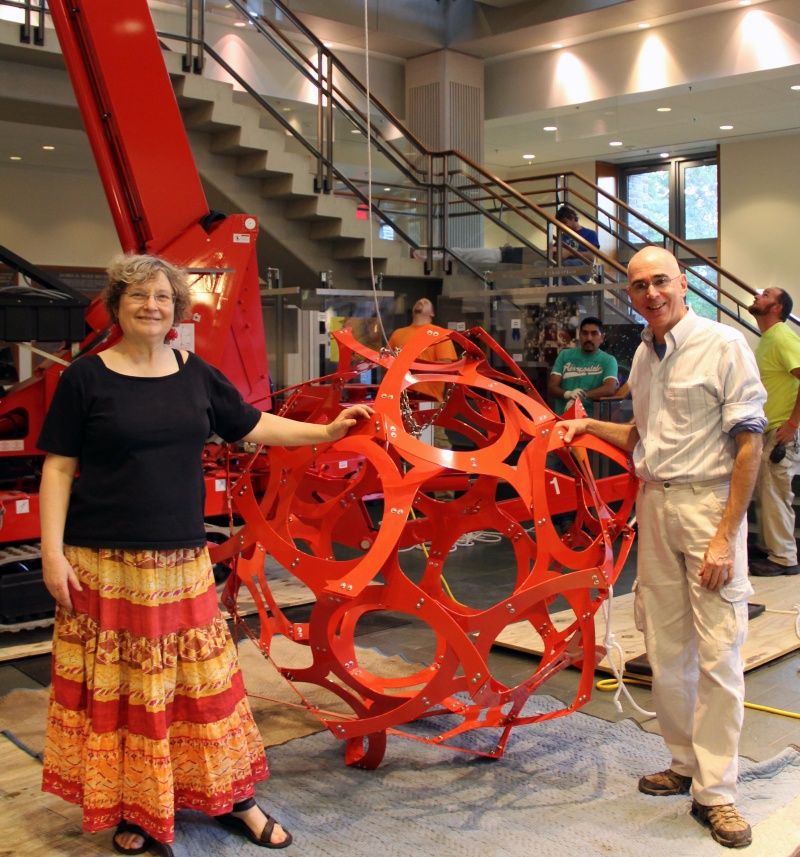
Its an odd goodbye when your baby is about
to float off into the sky like a balloon. Although it
remains within sight, it will likely be out of reach the
rest of my life.
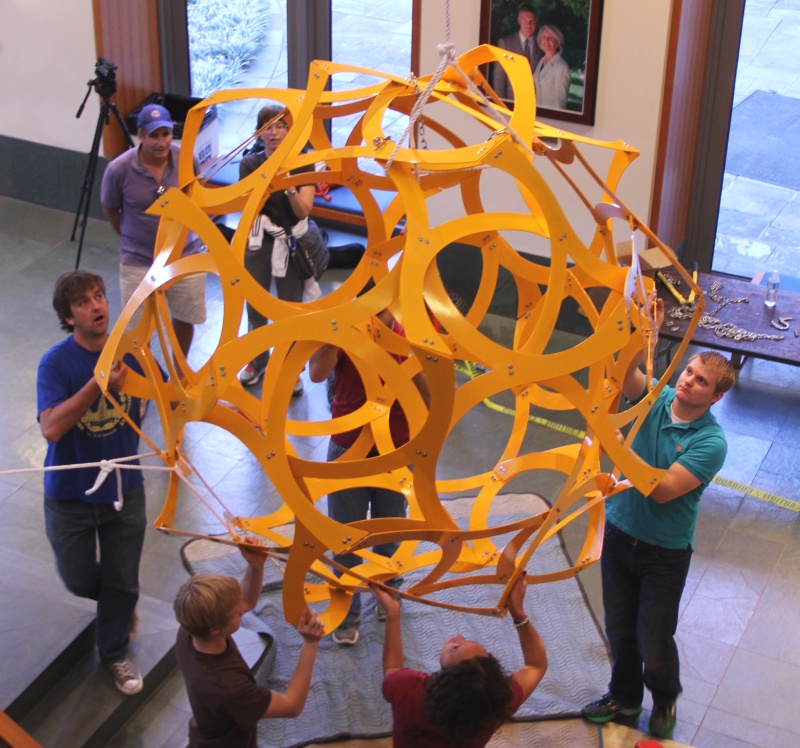
You can just see the three eye-bolts where
the chain connects at the top of the orb in the image
above. These replaced three of the regular bolts to
make a set of redundant attachment points.
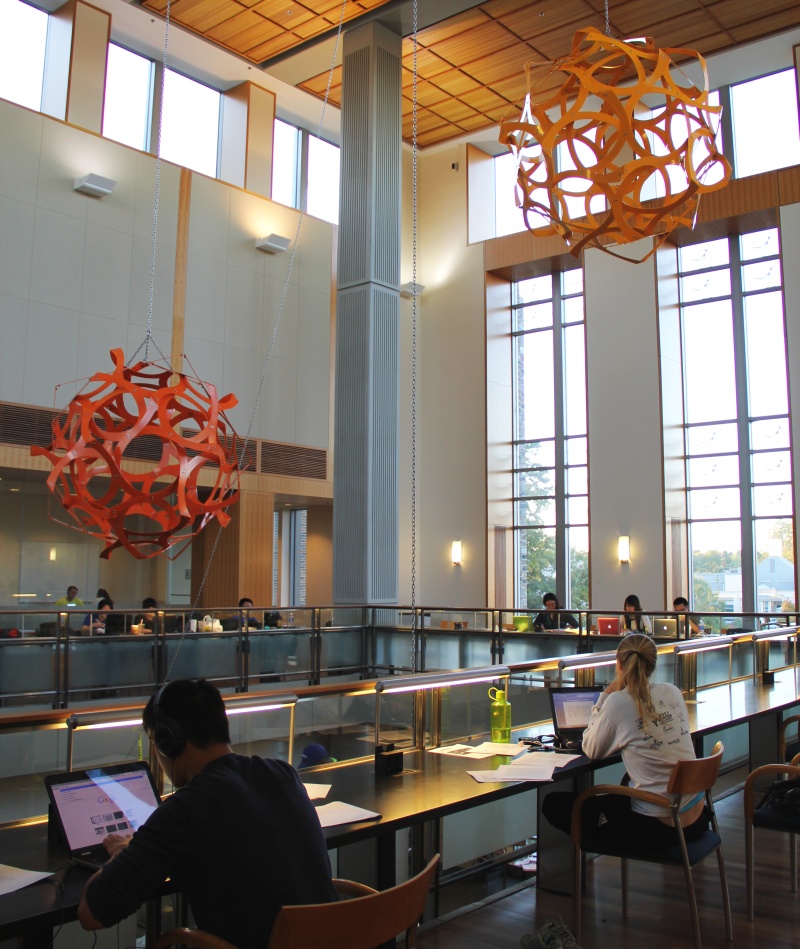
The result is quite beautiful, I must
say. I feel the sculpture fits in beautifully to the
architecture and function of the space. I hope the
students and faculty there enjoy it.
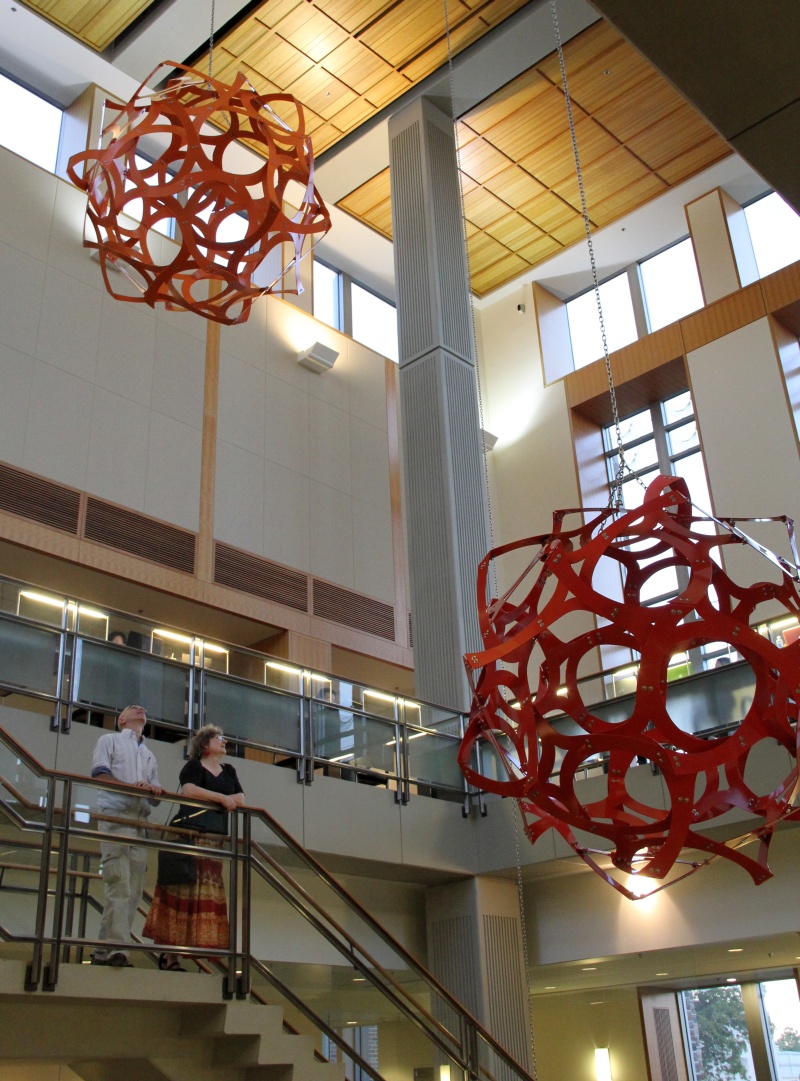
So if you are near Durham, NC, go visit Geometry
Ascending a Staircase in the CIEMAS building at Duke
University. I hope you enjoy walking up the stairs and
discovering something of its patterns and structure.
To see the assembly, watch this
video.
Here's an online article about it, with more video.
This video shows the preparation process,
and this video explains some of the math.
There are more photos available here.
This is my paper about it for the Bridges 2014 Conference.
Here's an online article about it, with more video.
This video shows the preparation process,
and this video explains some of the math.
There are more photos available here.
This is my paper about it for the Bridges 2014 Conference.
Thank you to everyone who participated in the assembly, especially Prof. Ingrid Daubechies, who commissioned the sculpture and championed it through various campus committees. Thank you also to special helpers Tingran Gao, Rujie Yin, Andrew Harms, and Meg McNall. And to Minnie Glymph and Amanda Dixon, who took these wonderful photos of the assembly. And thank you to many other folks at Duke who worked behind the scenes, including Myron Taschuk, George Truskey, Michael Gunter, and Kathy Peterson.